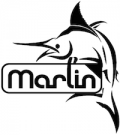Results 11 to 16 of 16
-
02-23-2017, 08:07 AM #11Student

- Join Date
- Feb 2017
- Posts
- 3
I use a soldering iron all the time to join PLA together and it is STRONG, what I do, is, I get a small length of filament and u(s)e that as a kind of solder. SO you put the filament on(l)y the area you want to join, put the soldering iron to it and just follow it down where you want the join. It is very strong and sturdy too.
Last edited by Roxy; 02-23-2017 at 01:51 PM.
-
02-23-2017, 02:01 PM #12
If you are fusing parts together that are printed in PLA... You should consider using Weld-On #4.
Check out: http://www.ebay.com/itm/IPS-Weld-On-...oAAOxyVLNSsaZC
I use it all the time to glue (FUSE!!!!) PLA parts together.
-
02-23-2017, 07:05 PM #13Student

- Join Date
- Feb 2017
- Posts
- 3
-
02-24-2017, 03:40 PM #14Staff Engineer

- Join Date
- Jan 2014
- Location
- Oakland, CA
- Posts
- 935
This might be a good application for one of those "3D printing pens" - which are actually more like 3D drawing pens that spit out hot plastic.
-
02-24-2017, 05:14 PM #15Student

- Join Date
- Feb 2017
- Posts
- 3
Here is something that you guys may find interesting.
-
02-26-2017, 11:59 PM #16
Has everyone forgotten where the filament for 3D printing originally came from? It was first made as the fillet for plastic welding, the plastic was softened by a hot air blower which later gave rise to the reflow tool used for smd circuits.




 Reply With Quote
Reply With Quote






Extruder not feeding during print,...
04-24-2024, 01:59 AM in Tips, Tricks and Tech Help